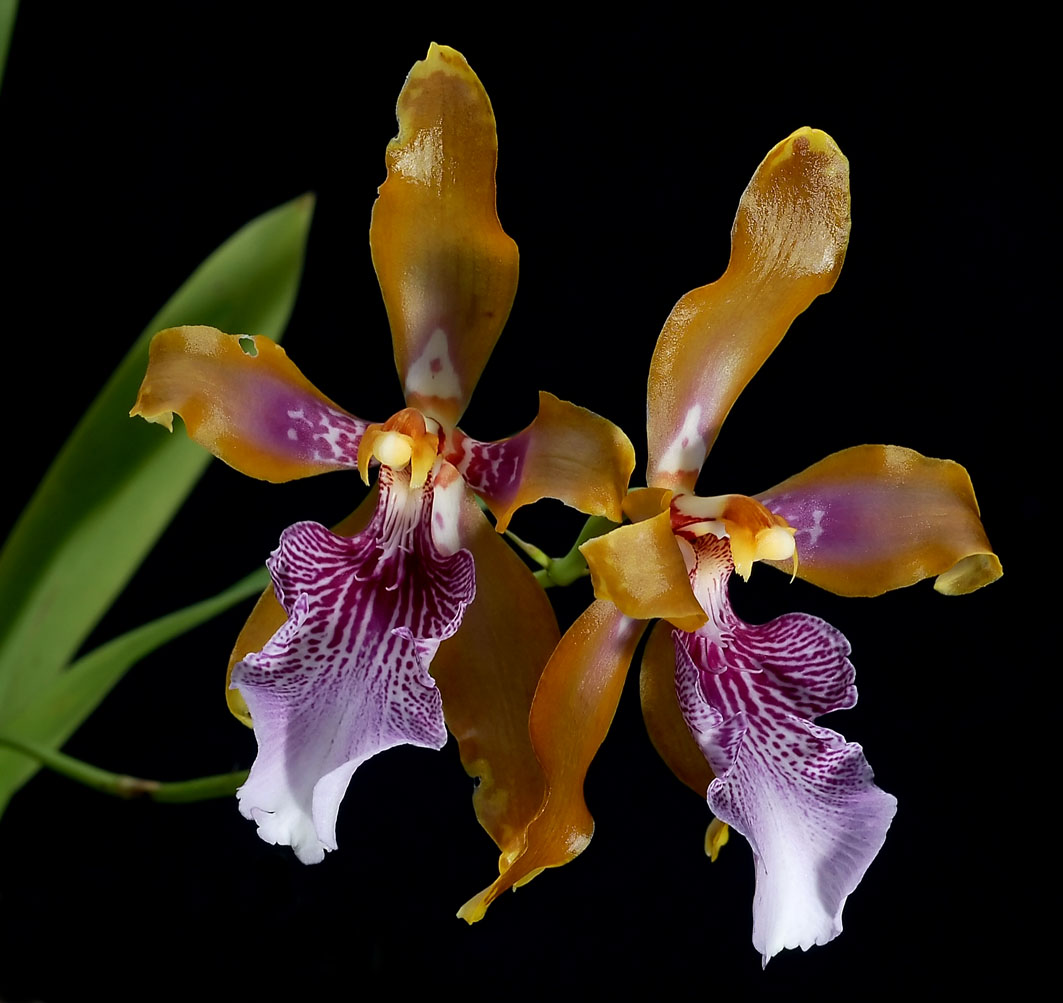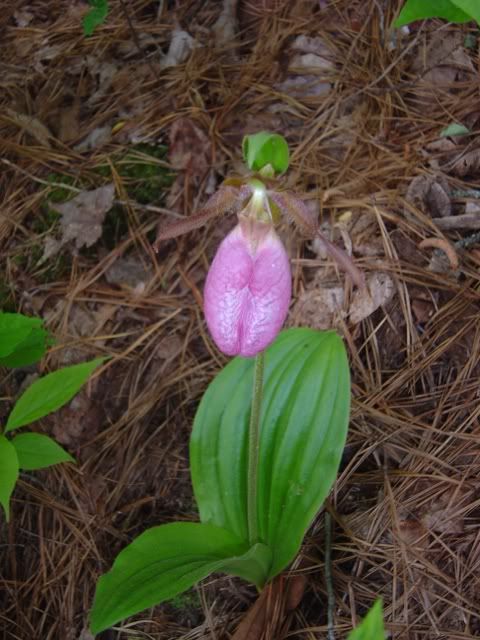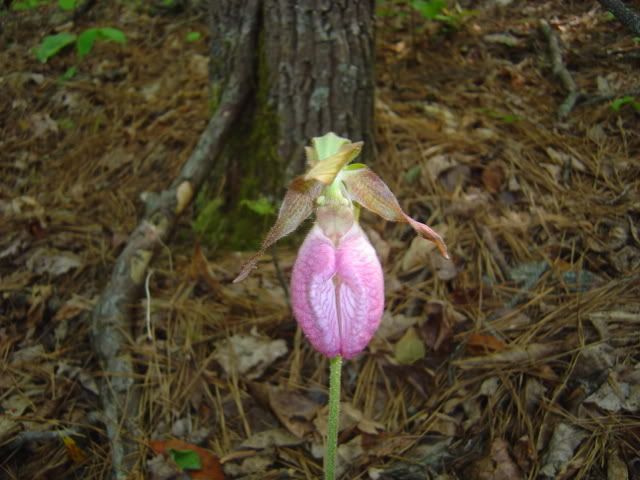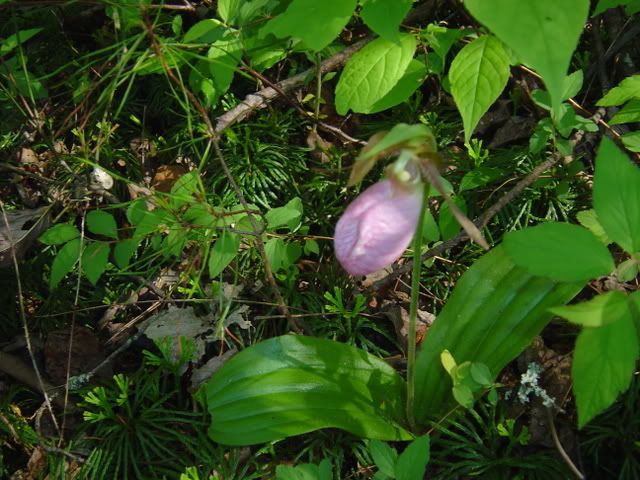


Donate Now
and become
Forum Supporter.

Many perks!
<...more...>


|

03-19-2008, 04:10 PM
|
|
Senior Member
|
|
Join Date: Oct 2006
Zone: 7a
Location: Uppsala, Sweden
Age: 51
Posts: 638
|
|
One more thing
I sense a disappointment that there are no Orchid available for your condition. Though when you look at the condition they are actually VERY extrem! The lesson to learn must be that you first find your plant and then fullfill the recuirements. Just becouse there are some plant (Nepenthes Villosa) that need this extrems, there is nothing that say that there is an orchid that can handle it. Unfortunate!
/Magnus
|

03-19-2008, 04:32 PM
|
|
Jr. Member
|
|
Join Date: Mar 2008
Posts: 11
|
|

I was going to spend a fortune on the LED's in order that they wouldn't heat up the chamber, but I have been told they wouldn't heat it up enough lol. i have decided I will be using two 65 watt power compacts, or one 95 watt power compact.
sorry over the confusion. My temperature range will be 4.4 degrees C to 20 degrees C every day. To be honest, 3 degrees C every night would be optimal, but it's not necessary and I don't think I could find any thing else to grow with it at that temp. Not that it's that far off.
But it's worth it, to grow this!:
http://www.carnivoren.org/de/ffp/gat.../villosa01.jpg
http://home.comcast.net/~jneps/DecemberVillosa.jpg
http://home.comcast.net/~jneps/villosaAbove.jpg
If I'm lucky, within 10 years the plant will be a 12 inches (30.48 centimeters) across , so i'd like to enjoy orchids as companion plants (and to utilize the vertical space) while I wait a decade to get something of decent size.
I have seen orchids in pictures of N. villosa in the wild. Isn't it just my luck that they are all large? Lmao. I'll have to review them and see if I can spot and small ones, that maybe someone here can identify.

|

03-19-2008, 11:01 PM
|
|
Senior Member
|
|
Join Date: Sep 2007
Posts: 286
|
|

It is a myth that LEDs don't produce heat. They don't produce heat, because they don't produce any light!!!
If they put out as much light as say fluorescents, they would be 3x hotter than fluorescents! Metal Halides are even more efficient than fluorescents! There is never something for nothing in lighting, LEDs are expensive and not good grow lights. Suffice to say I am a lighting freak and have complained enough in other threads to explain...
As for the fridge orchids... Plants function by transpiring moisture through it's leaves (evaporation) to wick water from the roots, generally speaking. As temperatures drop, the movement of nutrients (which are contained in the water) slows.
I admire your idea of a cool tank, but I think you're over shooting... First if you enclose the light in the refrigerator, it will soon overpower the compressor of the freezer. Freezers are meant to be very air tight and insulated. Their BTU ratings are usually no more than 1000, which comes out to about 300watts. Assuming your fridge is less than 300 watts, you are going to be hard pressed to keep the temps of a 70-100watt bulb and the orchids down to 40*F. you can calculate a BTU/hr to watts on google search "watts in BTU/hr" And figure at best you are getting a 75% efficiency. Meaning if your fridge takes 100 watts, you could continually cool 75 watts of heat. Fridges are not meant to continually cool things down, and work by inertia. I've torn apart a fridge, and it has a ton of insulation... They also work by convection, no forced cooling of the condenser (heat giving off part), You could improve that by puttting a fan on the condenser, but you need to make sure that the compressor isn't always on as it will eventually burn out, they're not meant to run 100% duty cycle. They are basically passive cooling systems, so be gentle and have limited expectations. If you can expose the evaporator inside and blow air across that, it will improve your cooling somewhat also.
You would have to isolate the bulb from the tank as it would condense and maybe not even start up at lower temps. You physically need to isolate any bulbs from the cool section, that's almost a must.
I admire your thinking, I really do, but I think you're trying to make technical wizardry into a plant. It just doesn't work that way, you gotta pick your plants and then build the orchidarium around that. I just think you're going about it the wrong way, no offense I hope.
Here's what is more in line with what you're trying to do... And what I think will work, and will be helpful to the plants:
Many plants have a dormant phase, and/or require cool i.e. 60*F nights regularly... nothing requires or would want <50*F on a regular basis. Remember, even in Alaska it is 80*F in the summer... Only sometimes high on the mountains do you require a very high humidity and a cold temp like the odontoglossums. Grow the plants normal during the day, and only turn on the fridge to get the temps down to ~60*F at night. ALL plants need heat to grow, plant growth in every plant is stunted by cold. That doesn't mean that all plants require HOT, but they would be negatively effected by maintaining <60*F at all times. Let it creep up to 70* during the day, then bring it back down at night. Gotta keep that ventilation and air movement going or you will get some mold.
You are going to have a lot of trouble keeping the humidity up and the temps down, they're contrarian environments. That's why nobody grows odontoglossums, they all grow oncidium hybrids. Remember you are bound by your environment, to make a good environment, you can only supplement your living quarters so much. i.e. you need ventilation from outside the tank.
To do a cool tank properly, you will be spending a lot of money on cooling capacity, because you need to ventilate, and humidify both... which is particulary difficult in a small environment. It is always cheaper to heat than to cool... Look at the big greenhouses, although you think you want to make a fridge orchidarium, the way to knowledge about growing orchids lies in how the big boys do it. To be frank, watch the ventilation and humidity systems of the big greenhouses, see if you can visit a local orchid house. And I don't mean these half assed personal ones people build into their homes or on their stoop of their porch. ( no offense, I'll be one of those people eventually, but I'm referring to the commercial greenhouses). I'm talking about tens of thousands of square feet of commercial greenhouse... if you can find one, you will be so much better off understanding what a growing system requires. All orchidariums/greenhouses have to breathe like the plants. Vent off gasses, lower humidity, and pull fresh air in to drive off the mold which grows in stagnant air. You also have to balance that with humidity operations which keep the plants from drying out.
I hope this is productive, I've been growing orchids for ~10 years, various "orchidariums" grow rooms etc... And have visited quite a few greenhouses which have given me inspiration on how it "should" be done. I've worked with fridges and cooling systems, humidification systems and am a moderator of a lighting forum specializing in HIDs (Metal Halide and HPS).
Last edited by Ocelaris; 03-19-2008 at 11:04 PM..
|

03-20-2008, 03:02 PM
|
|
Jr. Member
|
|
Join Date: Mar 2008
Posts: 11
|
|

Give me some credit. I may be a newbie to orchids, but I'm not to Nepenthes and believe it or not, I'm not making these numbers up. I don't think you understand what I was doing, however. This freezer is not an orchidarium. I'm building it specifically for N. villosa. I wanted orchids as companion plants. Apparently, I was giving orchids too much credit when I assumed a few could be found growing in conditions comparable to N. villosa.
I have to disagree with you on the temperatures. It is not as if I have pulled two arbitrary numbers out of a hat at random, and hoped for the best. Give me a little credit. You say "plants"; do you mean orchids? "Plants" is a broad category, and saying "nothing requires or would want <50*F on a regular basis" when the plant I am making this chamber for has been documented in cultivation to only grow into adulthood with nights at at least 40 degrees, and there are other plants (mostly Rhododendron species) that grow ABOVE N. villosa. What you said may be correct for orchids, but as I said, I am not building this chamber FOR orchids, and if you meant orchids, you should have specified instead of saying "nothing" and "plants". Nepenthes villosa has been shown to ONLY be able to grow to maturity with the cold conditions I have described. In fact, the nightly temperature I described of 40 degrees is a bit on the warm side! A few degrees lower would be better. As a juvenile plant, it can handle warmer temperatures, but as it grows larger (and this older) it's requirements become more and more strict. I was just speaking to a man the other day in the UK. His plant grew fine for a long time, until it reached a certain size and was stunted because the night temperatures weren't low enough year round in his greenhouse. This plant, and N. lamii, are known as the MOST strict Nepenthes, and that's why few people grow them. Two of the pictures I showed in my previous post are of Jeff Shafer's plant. He is the man I'm getting my information from, and he's the one who pioneered this technique. I also was not going to run this freezer all the time.... it will be on a timer, 8 hours a day, to only run at night and to cut off when it reaches 40 degrees and maintain that. In the day, it will not be on. No where did I ever say it would be kept at a constant 40 degrees 50 degrees, or even 60 degrees or that I would run it constantly.
As far as the air ventilation, Nepenthes do not require the ventilation orchids may. Air circulation is very good, but you do not have to circulate fresh air. Many people grow Nepenthes in totally enclosed, or almost totally enclosed, terraria, usually with a fan or two. I may have to make accommodations for orchids, if I can find any that will work for me.
As far as saying what I wish to do is not going to work, I've got to disagree with you once more. I also never said I was going to put the light INSIDE the freezer....You also say fridge a few times. To clear this up, I never intended to use a fridge. I intend to use a freezer. I don't see why you say I'll have problems keeping humidity up and temperatures down, when several people use freezers to grow ultra highland Nepenthes and keep high humidity.
Here you go, this is Jeff Shafer's article. See for yourself. Strangely enough, no one else has the problems you described, such as having high RH and low temperature, or having a difficult time cooling, when using a freezer to grow ultrahighland plants. Oddly enough, the plants are alive to this day, and they wouldn't be without these extreme temperatures. For all I, Jeff may be using the same freezer.
http://www.carnivorousplants.org/cpn...32n1p20_23.pdf
There is also a few other setups like this. Freezer Neps Part 2 - Terra Forums Carnivorous Plant Discussions This person posted a guide on how to make one, and I just spoke with him the other day. He informed me that the plants grew fantastically in it, but in the end he got rid of it. These pics to not feature N. villosa, but the plants are grown in a freezer. Sept pics - Terra Forums Carnivorous Plant Discussions
Sorry if I seem a bit insulted, but you're generalizations sound as if I'm making these parameters up, and especially when the things you say do not jive with any experiences of other people who have made ultrahighland chambers out of freezers. Here's someone's setup. Their setup only goes to 45 degrees at night, 70 at day since there is a wider variety of plants than just N. villosa in it, and the N. villosa that is in it is still immature and can handle warmer temperatures. None the less, this looks like it's working fabulously, and clearly the plants are receiving high humidity. Image of Freezer - Photobucket - Video and Image Hosting
In all of the following pictures, I can see plants with foliage indicating that they could easily be orchids. None of these are conclusive, of course. One thing is for sure, in all of these pictures there are many plants who should not be enjoying their extreme temperatures, as you say nothing does, but they look fine to me.
Upper right, growing on the fork in the tree. Also something with dark, stiff, orchid looking foliage below it growing on a tree branch. Also several Dendrobium looking plants:
http://coloradocarnivorousplantsocie...villosa_42.jpg
On the right side, there is a leaning tree that looks like it probably leans over the pathway. Look at the eppiphytes growing on the trunk:
http://coloradocarnivorousplantsocie...a_plants_4.jpg
Three orchid-looking plants under the Nepenthes in the center: http://coloradocarnivorousplantsocie..._plants_71.jpg
down and right a little from the pitcher in the center:
http://coloradocarnivorousplantsocie..._plants_77.jpg
My first thought of the plants above this pitcher was that it was another Nepenthes, but upon further inspection it has no tendrils, has a scape coming up from a place Nepenthes do not produce scapes from, and it APPEARS to have aerial roots.
http://coloradocarnivorousplantsocie..._plants_78.jpg
Monopodial orchid-looking plant (come on... )with visible aerial roots and what looks like a scape coming from the bottom to the left, smaller lance-shaped leaves that look like they may be orchids to the left and under the plant:
http://coloradocarnivorousplantsocie..._plants_53.jpg
Look to the left of the pitcher in the center of the picture. In the background, it looks as if a mass of moss is growing on a tree branch, and something with lance-shaped leaves, with flower spikes, appears to be growing in that moss. Over in the dark corner to the northeast of the pitcher, you can see a monopodial orchid.
http://coloradocarnivorousplantsocie..._villosa_3.jpg
These next two pics are N. x kinabaluensis, but there are only a handful of these plants, and they grow within the range of N. villosa. They are a hybrid between N. rajah and N. villosa. Look at the log, something with lance-shaped leaves appears to be growing on it:
http://coloradocarnivorousplantsocie...luensis_12.jpg
Small orchid-looking leaves surround this plant:
http://coloradocarnivorousplantsocie...luensis_22.jpg
Most of them are probably nothing, but it's hard to argue with the monopodial plants.
Last edited by JustLikeAPill; 03-20-2008 at 04:04 PM..
|

03-20-2008, 08:17 PM
|
|
Senior Member
|
|
Join Date: Sep 2007
Posts: 286
|
|

Shows how much I know about plants! Certainly is a wonderful environment which I know very little about. Personally I aim for plants which are slightly less work, easier to see and get at. 10 years is an admirable goal to have a plant bloom, but that is a commitment longer than I could promise to most pets, none-the-less plant!
If you check out the wik about Mount Kinabalu:
Mount Kinabalu - Wikipedia, the free encyclopedia
"it has one of the world’s richest orchid flora with over 800 species"
Orchids are the largest family of the flowering plants...
There might be a few people who are "cool growing" but they're talking about like 60* nights, as opposed to 50*. It's just not as popular because it's so much work and the contrapositive being so easy to grow at room temperature.
If you read that PDF, I think some of my concerns are shared with the author. Namely the thermal inertia of phase change coolers (broad term for fridge + freezer), and the condensation of moisture on cold surfaces which is cause by the evaporator...
I think you've been offended too much by my post. I apologize if it came off insulting, but the post before was about LEDs... safe to say I thought I was dealing with a less than technical person. If you see others doing it similarly, then by all means copy what they're doing. Unfortunately as you've seen, what you ask of the general orchid community is beyond the scope of our normal knowledge. With that said we are often the stopping point of many other hobbyists who use orchids as a companion plant. Although we are friendly to all, and many are straddlers (namely the owner Marty et. all), most have very little knowledge about the orchids which are commonly cultured our hobby. So by starting off at ground zero with new comers, should not be taken personally as much as symbolic of your initiation... The key word here is NEWB-syndrome, where all the so called knowledgeable people pile on derogatory statements on the well spoken and fairly intelligible newcomer as is the case here. We don't hear what you're saying, the repetitive nature of other hobbyists using orchids as "companion" plants has made us deaf until you scream... that's just the way it is, no offense, but, that's how forums with entrenched memberships are.
My sincere apologies if I came off condescending. I would believe we have much more in common when it comes to obsessive care of our plants!
I admire your goals, and wish I could help further, why not look at the odontoglossum species which grow high in the peruvian mountains... Which if I had the space/time/money/energy, I would certainly grow.
My reference to the difficulty of maintaining cool and humid is in direct correlation to the growing of these odontoglossum orchids. I've talked with an owner of a commercial orchid greenhouse cultivation why odontos weren't being more commonly grown, was because the difficulty in maintaining proper humidity and temperature in relation to the outside. And this is fairly well proven by the fact that you have to grow in a freezer chest...
I just find this highly amusing... in a good way, but I had no idea such a thing existed... my mind starts wandering... and maybe at some point I may have a large freezer chest with odontos!!!
Unfortunately a freezer chest is too small for all but the smallest odontos... Their cultivation is basically a wet bench, and must be grown high in the mountains where it never reaches high temps. And mold is ever present... They're some of the most beautiful plants, but their cold requirements and humidity keeps them out of reach of most growers.
I'm sure there are species out there being cultivated, but you're going to have to probably find a primary source in malaysia or a university which might specialize in those areas. Columbian or Peruvian importers on ebay might be somewhere to look?
I hope no hard feelings, I think you will find I am one of the most humble when I am wrong, and first to admit my wrongs... I sincerely believe when I say something. If you are searching for truth, you can never be wrong as long as you acknowledge when someone else holds it. Best, Bill
See the culture for Odontoglossum here:
AOS Odontoglossum Alliance Culture Sheet
Quote:
LIGHT levels should be bright. An east window or a shaded south window in the home is ideal; western exposures are usually too warm in most climates. In a greenhouse, levels from 2,000 to 5,000 foot-candles are acceptable; some Miltoniopsis growers demand the pink flushing in the plants' leaves which results from the high light levels. If summer day temperatures are high, light levels can be reduced to cool the growing area.
TEMPERATURE is critical for these plants; day temperatures below 75 to 80 degrees F are preferred year-round. Night temperatures of 55 to 58 degrees F are best. Short periods of warmer day temperatures may be tolerated, especially if humidity and air movement are at optimal revels and nights are cool. Miltoniopsis plants prefer night temperatures at the upper end of the range while many odontoglossums thrive at 50 to 55 degrees F at night.
WATER should be plentiful, coupled with perfect drainage. The potting medium should just start to dry before watering again. "Accordion-pleating" on miltonia leaves is a symptom of insufficient water or humidity, and may appear on plants of other genera if severe. This may mean watering every two to seven days, depending on weather, pot size and material, and type of potting medium.
HUMIDITY ideally 40% to 80%, is important for all these orchids, coupled with moving air. In the home, set the plants on trays above moist pebbles, with the pot resting above the water. Misting is beneficial, but in the mornings only. Evaporative cooling in a greenhouse increases humidity while cooling the air and is highly recommended for these orchids in most climates. Fogging the air or dampening the floor with water also helps cool and humidify.
|


|

03-20-2008, 08:27 PM
|
|
Senior Member
|
|
Join Date: Sep 2007
Posts: 286
|
|
here, let's lighten it up a bit...
You Pelican, Me little kid:
 |

03-20-2008, 08:35 PM
|
|
Jr. Member
|
|
Join Date: Mar 2008
Posts: 11
|
|
Last edited by JustLikeAPill; 03-20-2008 at 08:56 PM..
|

03-21-2008, 07:51 AM
|
|
Senior Member
|
|
Join Date: Nov 2007
Zone: 9a
Location: Glendale, CA
Age: 46
Posts: 557
|
|

It's not a matter of whether cold requiring orchids exist...it's more a matter that relatively speaking, very few orchid growers are A. aware these type of orchids exist B. interested in growing these types of orchids C. capable of growing these types of orchids and D. able to find sources for these types of orchids.
So to help out with Part A I did a bit of your homework for you and any other orchid growing trend setters who happen to stumble across this thread.
To my knowledge Mr. Baker is the only orchidologist to have systematically combined climate data with orchid habitat data to come up with some actual temperature data for orchids. Nearly every other orchid book places orchids in one or more of 3 excessively broad temperature categories: Cool, Intermediate and Warm.
I went through two of Mr. Baker's books and pulled out a few orchids that were the closest matches for your temperature requirements. The majority of them are from his Oncidium Alliance Culture Book and the rest are from his Orchid Culture Website.
The first number is the highest average temperature and the second number is the lowest average temperature. Most of the orchids do experience some degree of seasonal temperature variation and I really have no idea how variations of several degrees from their averages will effect their growth over time. In retrospect, the averages of the highs and lows might have been a more accurate depiction of their suitability but I would have had to manually input their monthly average highs and lows and it was time consuming enough just picking the highest and lowest averages.
Again, this list was compiled only with temperature range in mind and not in regards to the size of the orchids.
Arpophyllum giganteum subsp. alpinum 63 36
Bulbophyllum gamblei 69 38
Coelogyne cristata 69 29
Coelogyne nitida 66 35
Cyrtochilum confusum 68 35
Cyrtochilum davisii 68 35
Cyrtochilum diceratum 68 40
Cyrtochilum funis 65 40
Cyrtochilum gargantua 68 35
Cyrtochilum ionopterum 67 34
Cyrtochilum ramosissimum 64 40
Cyrtochilum tricostatum 65 40
Dendrobium rotundatum 68 28
Dendrobium spathaceum 68 28
Earina mucronata 69 38
Epidendrum serpens 68 40
Fernandezia nigrosignata 69 36
Masdevallia amabilis 69 36
Odontoglossum callacallaense 61 39
Oncidium acinaceum 67 34
Oncidium anomalum 63 38
Oncidium ayabacanum 65 32
Oncidium chimborazoense 67 39
Oncidium falcipetalum 68 35
Oncidium foveatum 69 36
Oncidium hapalotyle 64 36
Oncidium lucasianum 68 35
Oncidium sanguinolentum 66 40
Oncidium tunguraguense 68 40
Pachyphyllum crystallinum 66 39
Pachyphyllum favosifolium 64 39
Pachyphyllum hagsateri 67 39
Pachyphyllum hartwegii 67 40
Pachyphyllum micrangis 64 36
Pachyphyllum micranthum 66 40
Pachyphyllum peperomoides 67 39
Pachyphyllum serra 61 28
Solenidiopsis peruviana 68 35
Tolumnia compressicaulis 68 36
There are numerous other orchid genera that grow in the high mountains near the equator but as mentioned, there are very few books that include detailed climate information for the habitat of the orchid.
For situations where I know the elevation and latitude I came up with a multiple regression equation that provides a somewhat rough estimate of the lowest average temperature an orchid might experience in its habitat...
Min = 77.35541724 - 0.838402676(Lat) - 0.003051964(Elev)
Using Nepenthes villosa as an example...at its lowest elevation its lowest average temperature would be 48.9F (77.35541724 - 0.838402676(6) - 0.003051964(7677ft)) and at its highest elevation its lowest average temperature would be 39.8F (77.35541724 - 0.838402676(6) - 0.003051964(10629ft)). It's a really rough predictor because there are obviously other factors that determine actual temperatures.
Here's an interesting exchange on Dendrobiums in the mountains of Papua New Guinea (reads bottom to top) and off the top of my head the the only source I can think of for some of the orchids of the Andes is Ecuagenera.
Best of success and look forward to hearing occasional updates if you manage to track down and grow any orchids in your modified freezer.

|

03-21-2008, 11:08 AM
|
|
Jr. Member
|
|
Join Date: Mar 2008
Posts: 11
|
|
WOW! THANK YOU! That is FABULOUS! I'm going to do some homework on these species! Thank you! I will definitely update this thread whenever I purchase some plants and see how they work. Who knows? I may have a new hobby!
Last edited by JustLikeAPill; 03-21-2008 at 11:20 AM..
|
|
Currently Active Users Viewing This Thread: 1 (0 members and 1 guests)
|
|
|
 Posting Rules
Posting Rules
|
You may not post new threads
You may not post replies
You may not post attachments
You may not edit your posts
HTML code is Off
|
|
|
All times are GMT -4. The time now is 06:24 AM.
|

























 Someone once said Nepenthes growers were temperamental hehe. I over reacted a bit, and I'm sorry. I guess I felt a little insulted in my area of expertise (which is by no means to say I am an expert
Someone once said Nepenthes growers were temperamental hehe. I over reacted a bit, and I'm sorry. I guess I felt a little insulted in my area of expertise (which is by no means to say I am an expert 












 Linear Mode
Linear Mode


